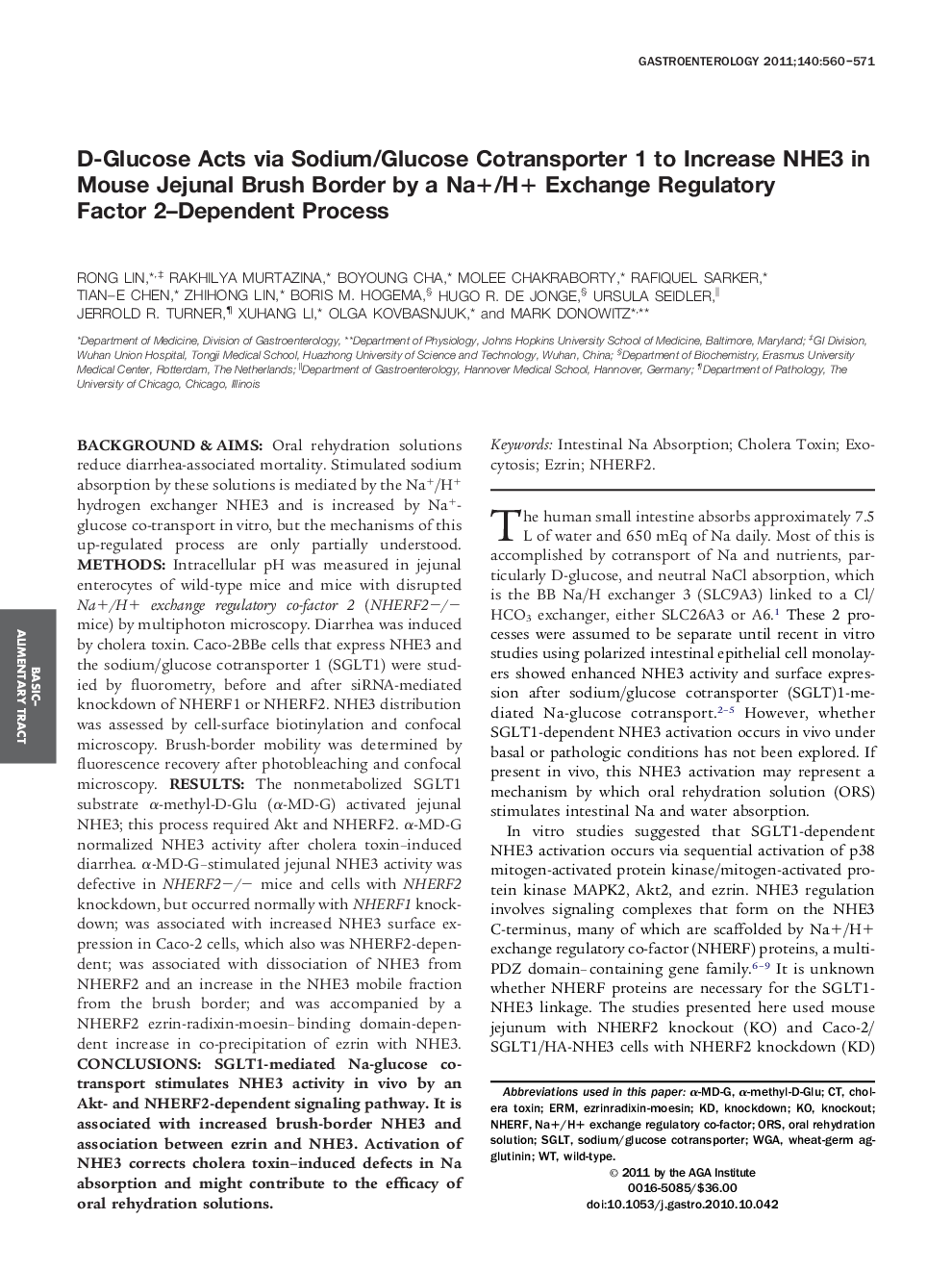| کد مقاله | کد نشریه | سال انتشار | مقاله انگلیسی | نسخه تمام متن |
|---|---|---|---|---|
| 3297411 | 1209884 | 2011 | 12 صفحه PDF | دانلود رایگان |

Background & AimsOral rehydration solutions reduce diarrhea-associated mortality. Stimulated sodium absorption by these solutions is mediated by the Na+/H+ hydrogen exchanger NHE3 and is increased by Na+-glucose co-transport in vitro, but the mechanisms of this up-regulated process are only partially understood.MethodsIntracellular pH was measured in jejunal enterocytes of wild-type mice and mice with disrupted Na+/H+ exchange regulatory co-factor 2 (NHERF2−/− mice) by multiphoton microscopy. Diarrhea was induced by cholera toxin. Caco-2BBe cells that express NHE3 and the sodium/glucose cotransporter 1 (SGLT1) were studied by fluorometry, before and after siRNA-mediated knockdown of NHERF1 or NHERF2. NHE3 distribution was assessed by cell-surface biotinylation and confocal microscopy. Brush-border mobility was determined by fluorescence recovery after photobleaching and confocal microscopy.ResultsThe nonmetabolized SGLT1 substrate α-methyl-D-Glu (α-MD-G) activated jejunal NHE3; this process required Akt and NHERF2. α-MD-G normalized NHE3 activity after cholera toxin–induced diarrhea. α-MD-G–stimulated jejunal NHE3 activity was defective in NHERF2−/− mice and cells with NHERF2 knockdown, but occurred normally with NHERF1 knockdown; was associated with increased NHE3 surface expression in Caco-2 cells, which also was NHERF2-dependent; was associated with dissociation of NHE3 from NHERF2 and an increase in the NHE3 mobile fraction from the brush border; and was accompanied by a NHERF2 ezrin-radixin-moesin–binding domain-dependent increase in co-precipitation of ezrin with NHE3.ConclusionsSGLT1-mediated Na-glucose co-transport stimulates NHE3 activity in vivo by an Akt- and NHERF2-dependent signaling pathway. It is associated with increased brush-border NHE3 and association between ezrin and NHE3. Activation of NHE3 corrects cholera toxin–induced defects in Na absorption and might contribute to the efficacy of oral rehydration solutions.
Journal: Gastroenterology - Volume 140, Issue 2, February 2011, Pages 560–571